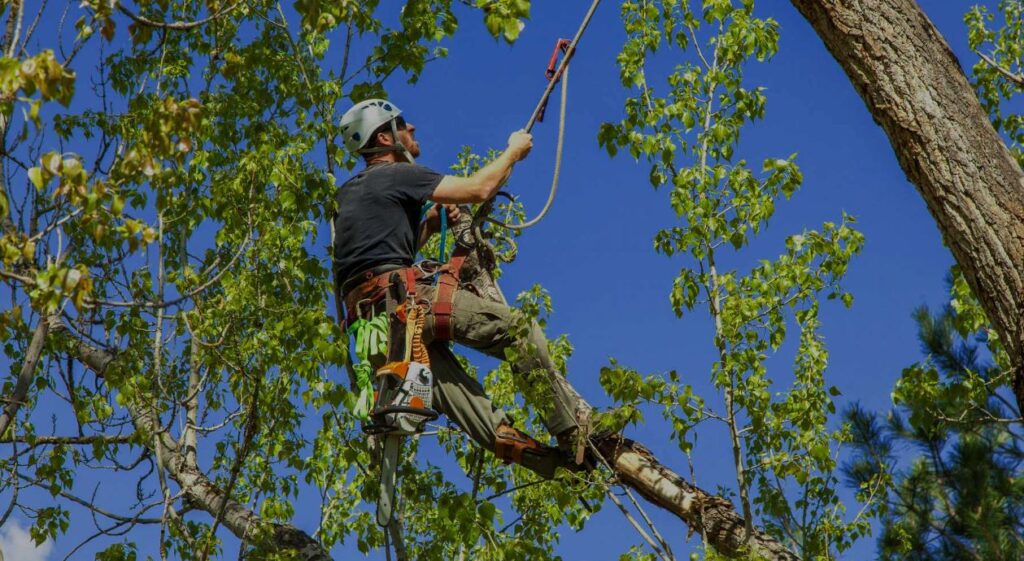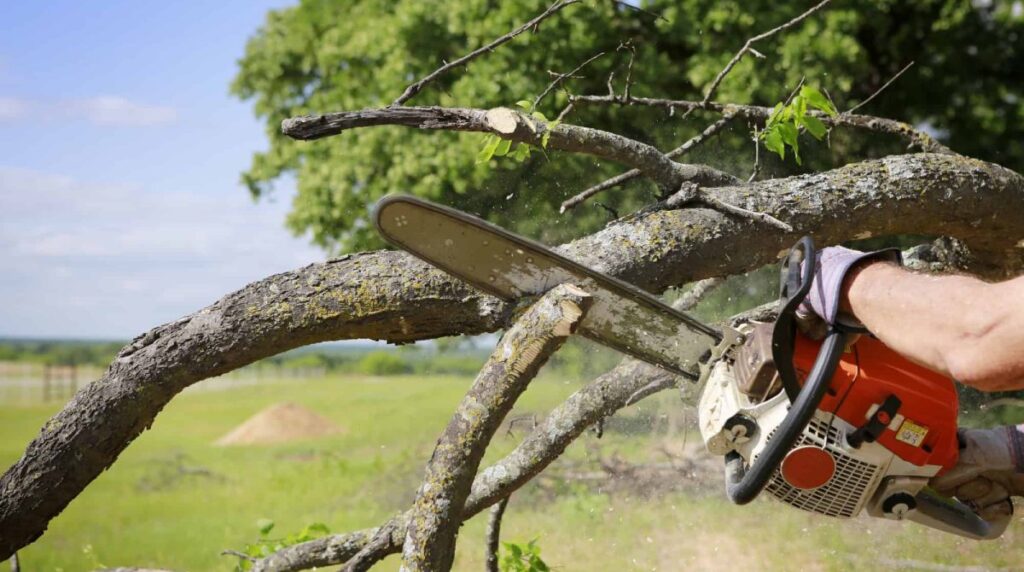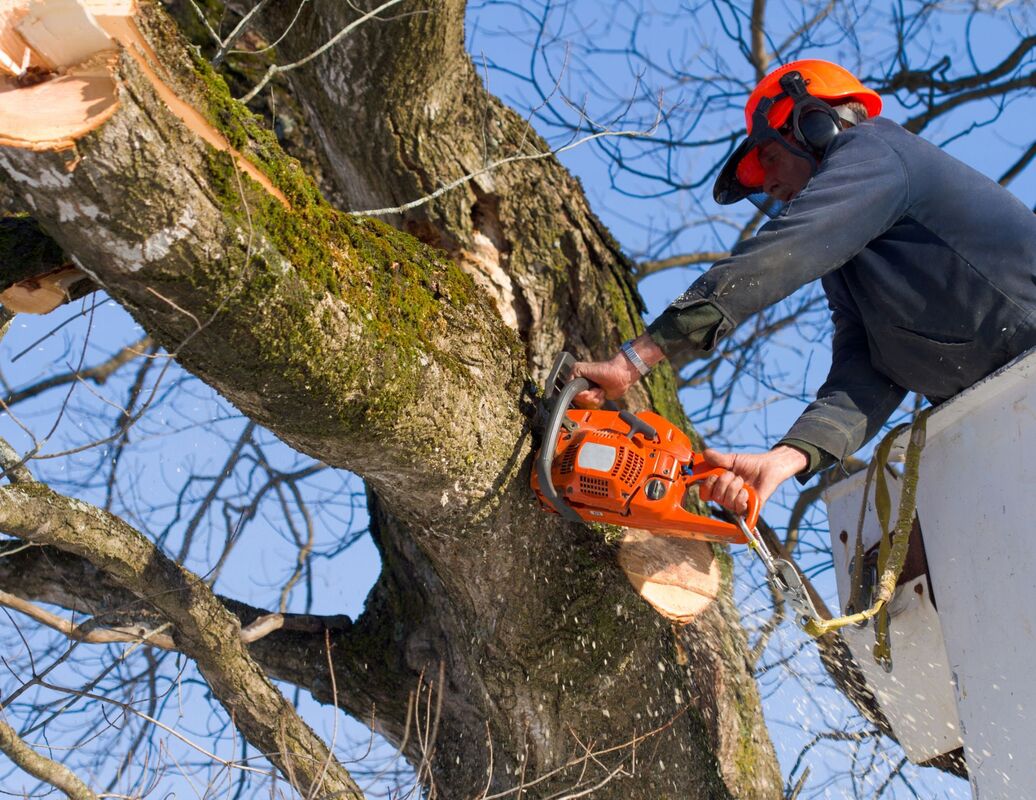Tree trimming is essential to maintaining a healthy and aesthetically pleasing landscape. Whether you need to enhance the appearance of your yard, ensure the safety of your home, or improve the health of your trees, regular trimming can make a significant difference. However, tree trimming costs can vary greatly depending on several factors. Understanding these factors, along with tips on how to save money, can help you make the best decisions for your property.
In this article, we will break down the various factors that influence tree trimming costs, what you can expect to pay, and how to find affordable “tree trimming near me” without compromising on quality. Proper knowledge will empower you to make informed decisions that enhance the beauty of your yard while keeping your budget in check.
Why Is Tree Trimming Important?
Before diving into the costs, it’s essential to understand why tree trimming is crucial. Trees need periodic trimming to:
- Promote healthy growth: Removing dead or diseased branches helps trees focus their energy on healthy growth.
- Enhance safety: Overgrown branches can become hazards, especially in storms, as they may fall and damage property or injure people.
- Improve aesthetics: Regular trimming helps maintain the shape and structure of your trees, enhancing your property’s curb appeal.
- Prevent interference: Trimming prevents tree branches from growing into power lines, homes, or obstructing driveways and walkways.
If you’re searching for “tree trimming near me” to maintain your yard, understanding the factors affecting the cost can help you plan your budget more effectively.

Factors That Influence Tree Trimming Costs
Tree trimming costs are not one-size-fits-all. Several factors can significantly impact the final cost of the service. Here are the key aspects that affect tree trimming expenses:
1. Tree Size
The size of the tree plays a major role in determining the cost. Larger trees with more extensive branches require more time and effort to trim, which results in higher labor costs. Typically, taller trees need specialized equipment, like bucket trucks or climbing gear, making the service more expensive.
- Small trees (under 30 feet): These are generally easier and cheaper to trim.
- Medium trees (30 to 60 feet): The trimming costs for these trees tend to be moderate.
- Large trees (60 feet or more): These require more labor, equipment, and often multiple workers, leading to higher costs.
2. Tree Condition
The health and condition of the tree also influence the price. Trees that are diseased, dead, or have extensive overgrowth require more intensive work. Diseased trees may need careful handling to avoid spreading infection to nearby trees, which can increase the cost. Conversely, trees in good health and with regular maintenance are typically cheaper to trim.
3. Location and Accessibility
The location of the tree on your property affects trimming costs. Trees located in difficult-to-reach areas, such as near power lines, fences, or close to your home, may require additional precautions and special equipment. If the tree is situated in a hard-to-access spot, it will take longer for the crew to complete the task, leading to higher charges.
4. Type of Tree
Different species of trees have varying trimming requirements. For instance, hardwood trees such as oak or maple tend to have denser branches and require more effort to trim, while softer trees, like pine, may be easier and cheaper to maintain. The growth pattern of the tree species can also affect the trimming process, with trees that grow rapidly or have complex branch structures costing more to trim.
5. Time of Year
Tree trimming services are usually more affordable during the off-season, typically in late winter or early spring, when demand for tree services is lower. On the other hand, trimming during peak seasons, such as summer or fall, may be more expensive as there is higher demand for tree care.
6. Additional Services
Sometimes, tree trimming involves more than just cutting branches. If your tree trimming service includes additional tasks like debris removal, stump grinding, or tree shaping, the cost will naturally increase. Some companies offer package deals, so it’s worth asking about any additional services that might affect the overall price.

Typical Tree Trimming Costs
While the final price for tree trimming can vary depending on the factors mentioned above, here is a general breakdown of what you can expect:
- Small trees: $75 to $300
- Medium trees: $300 to $700
- Large trees: $700 to $1,500 or more
If you’re unsure of the costs in your area, searching for “tree trimming near me” can help you find local services and compare prices. Keep in mind that these estimates may fluctuate depending on your location and the specific needs of your trees.
How to Save Money on Tree Trimming Services
Tree trimming doesn’t have to break the bank. By being proactive and taking certain measures, you can save on the cost of trimming your trees while still ensuring the job is done professionally and safely. Here are some tips to help you save money:
1. Trim Regularly
Regular tree maintenance is essential for keeping trimming costs low. Trees that are regularly trimmed are easier to manage and less time-consuming, reducing labor costs. Waiting until your trees are overgrown or diseased can lead to higher expenses.
2. Get Multiple Quotes
One of the best ways to save money on tree trimming is to shop around. Reach out to multiple tree care companies and get detailed quotes. Comparing prices will give you a better idea of what you should expect to pay and may help you find a more affordable service.
3. Choose the Right Time
As mentioned earlier, tree trimming costs tend to be lower in the off-season. If your tree doesn’t require immediate attention, schedule your service for the late winter or early spring to take advantage of discounted rates.
4. Bundle Services
If you need more than one tree trimmed, consider bundling the services. Some companies offer discounts for trimming multiple trees at once. Additionally, you may save money by combining other tree care services, such as pruning or tree removal, into a single package.
5. DIY for Small Tasks
While it’s not recommended to trim large trees or those in hazardous locations by yourself, you can save money by handling minor trimming tasks. For example, trimming small branches or low-hanging limbs can often be done safely with the right tools. However, always prioritize safety and know your limits when considering DIY tree trimming.
6. Check for Discounts and Promotions
Many tree service companies offer seasonal promotions or discounts for new customers. Keep an eye out for these deals when searching for “tree trimming near me.” Some companies also provide discounts for senior citizens, veterans, or members of certain homeowner associations.
7. Plan for Long-Term Maintenance
Instead of dealing with tree problems on an emergency basis, consider planning a long-term tree care schedule. Hiring a tree care company for ongoing maintenance may result in reduced rates over time, as they can offer a comprehensive package that covers regular trimming, disease prevention, and other services. You can visit https://extension.psu.edu/how-long-should-i-expect-my-tree-to-last to get about how long should I expect my tree to last?
Why Hire a Professional Tree Trimming Service?
While some homeowners may be tempted to save money by attempting tree trimming themselves, professional services offer several important benefits:
- Safety: Tree trimming, especially for large or overgrown trees, can be dangerous without the proper equipment and training. Professionals have the skills and tools needed to perform the job safely.
- Expertise: Certified arborists can assess the health of your trees and recommend the best trimming practices to promote growth and prevent disease.
- Quality: Professional tree trimmers know how to shape your trees to enhance their appearance and ensure they grow properly.
- Efficiency: Professionals can complete the job quickly and efficiently, reducing the risk of damage to your property or surrounding trees.
Ultimately, investing in a professional tree trimming service ensures your trees remain healthy, beautiful, and safe for years to come.
Conclusion: Plan Your Tree Trimming Wisely
Tree trimming is essential to maintaining the health and safety of your trees, but understanding the costs involved can help you plan and save money. Factors such as tree size, condition, location, and time of year will impact the overall cost, so it’s important to be aware of these variables when searching for “tree trimming near me.” By following the tips provided in this guide, you can trim your trees affordably without compromising on quality.
Make sure to hire a professional tree trimming service to keep your trees healthy, safe, and beautiful for the long term. Proper tree maintenance will not only enhance the appearance of your property but also prevent costly damage in the future.

